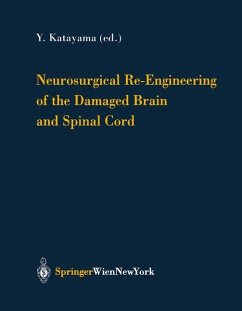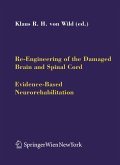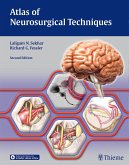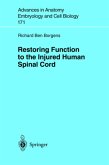This volume highlights the important role played by neurosurgeons and their techniques in neurorehabilitation. The authors review the recent advances made in neurosurgical techniques which can contribute to the patient's functional recovery from neurological deficits, such as movement disorders, bladder dysfunction, pain and other sensory disturbances, and cognitive dysfunction after CNS damage. They also demonstrate that when neurosurgeons are actively involved in applying a multidisciplinary approach during early neurorehabilitation, the patient's functional recovery is greatly facilitated through the timely use of various different neurosurgical techniques, including nerve grafting, cell transplantation, cortical stimulation, deep brain and spinal cord stimulation, peripheral nerve stimulation, and intrathecal drug therapy. The importance of such a multidisciplinary approach is discussed in terms of a new concept, the neurosurgical re-engineering of the damaged CNS.
This volume is the second in a new series of pro The task carried out through the collaboration of ceedings covering the official scientific meetings of the neurosurgeons and specialists in neurorehabilitation Neurorehabilitation Committee of the World Federa cannot be viewed simply as a restoration of function or tion of Neurosurgical Societies (WFNS). The first reconstruction of structure. Recent advances in neu scientific meeting of the WFNS Neurorehabilitation roimaging techniques have begun to demonstrate that Committee was held successfully in Munster, Ger it involves extensive functional and structural reorga many, in 2000 under the auspices of Professor Klaus nization of neural networks within the brain and R. H. von Wild. The proceedings of that meeting probably the spinal cord. On this basis, we felt that it (Functional Rehabilitation in Neurosurgery and Neu might be more appropriate to refer to such activities as rotraumatology) were published as a supplement to re-engineering of the damaged brain and spinal cord. Acta Neurochirurgica (volume 79, 2001). This first In order to encapsulate such a concept, the second scientific meeting highlighted the important role scientific meeting was entitled the Second Interna played by neurosurgeons in neurorehabilitation be tional Symposium on Neurosurgical Re-engineering of at an early period after brain or spinal cord the Damaged Brain and Spinal Cord (NRDBS'02). ginning damage.
This volume is the second in a new series of pro The task carried out through the collaboration of ceedings covering the official scientific meetings of the neurosurgeons and specialists in neurorehabilitation Neurorehabilitation Committee of the World Federa cannot be viewed simply as a restoration of function or tion of Neurosurgical Societies (WFNS). The first reconstruction of structure. Recent advances in neu scientific meeting of the WFNS Neurorehabilitation roimaging techniques have begun to demonstrate that Committee was held successfully in Munster, Ger it involves extensive functional and structural reorga many, in 2000 under the auspices of Professor Klaus nization of neural networks within the brain and R. H. von Wild. The proceedings of that meeting probably the spinal cord. On this basis, we felt that it (Functional Rehabilitation in Neurosurgery and Neu might be more appropriate to refer to such activities as rotraumatology) were published as a supplement to re-engineering of the damaged brain and spinal cord. Acta Neurochirurgica (volume 79, 2001). This first In order to encapsulate such a concept, the second scientific meeting highlighted the important role scientific meeting was entitled the Second Interna played by neurosurgeons in neurorehabilitation be tional Symposium on Neurosurgical Re-engineering of at an early period after brain or spinal cord the Damaged Brain and Spinal Cord (NRDBS'02). ginning damage.








